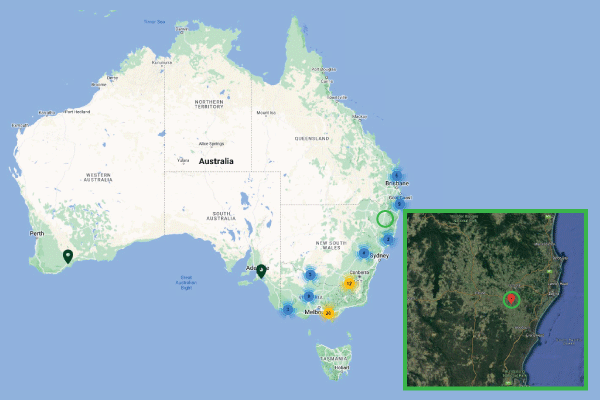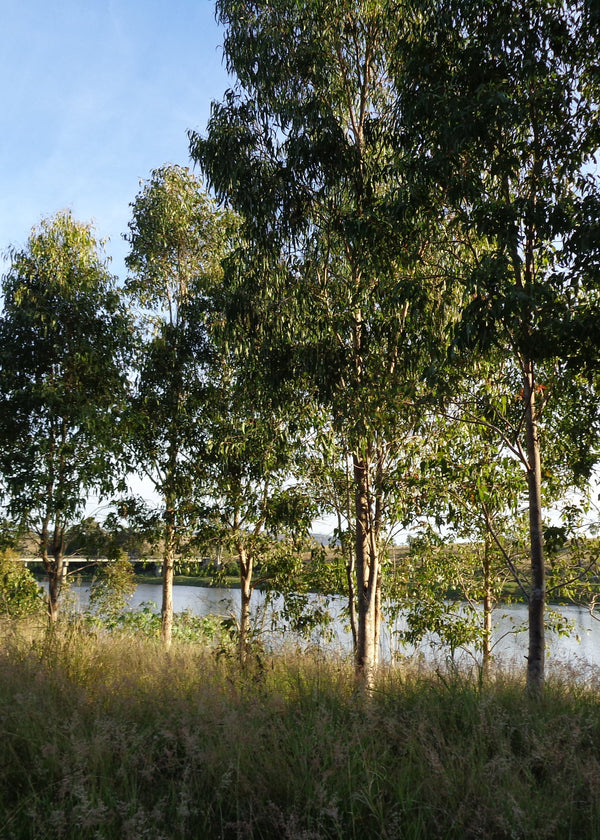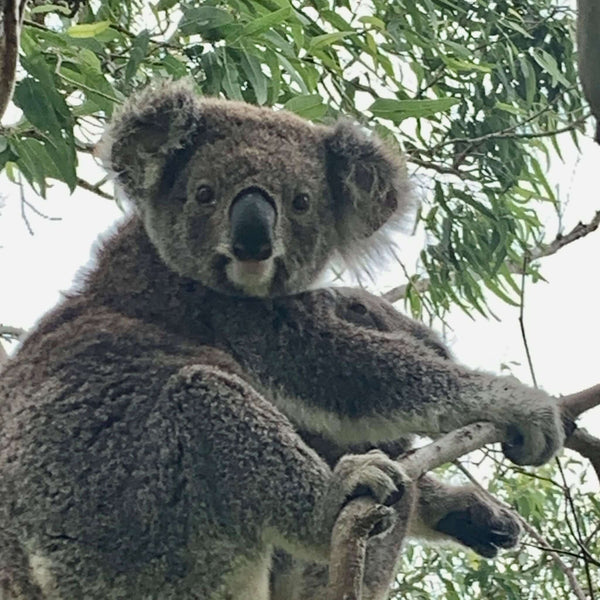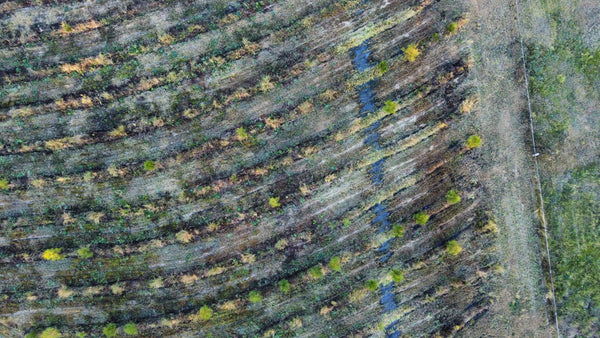Connecting Koala Habitat in Northern NSW
Greenfleet is growing a native forest on the floodplain of the Wilson River in Northern NSW to extend vital habitat for a breeding population of koalas and deliver climate action.
Located on Bundjalung Country, this region has been extensively cleared for agricultural purposes and landholders Alex and Kylie purchased this land motivated to make a positive environmental impact. Living on the property with their children Jaime and Erin, Alex reflected that all along they “wanted to create habitat and contribute to the restoration of biodiversity.”
Greenfleet revegetated this property in 2021 and with cattle grazing occurring in surrounding properties, this revegetation work will help reconnect pockets of existing koala habitat. By improving connectivity between the Pelican Flood Reserve and an adjoining quarry Koala Reserve, Greenfleet is also contributing to the expansion and sustainability of key koala populations.
Greenfleet’s aim is to support the restoration of native forest across the property to increase biodiversity, deliver climate action, and extend habitat for the region’s endangered koalas.

Location & Map
Located near Lismore in Northern NSW, this property contains important biodiversity values. It's located adjacent to known koala habitat and a wildlife corridor where the existing koala population is prolific.

Ecosystem Restoration
Greenfleet’s revegetation carefully researches and selects species that are locally native to the areas in which we are revegetating. This means, we are helping to restore the forest that existed prior to the land being cleared.
The species selected for the protect at Greentrees, will restore the coastal swamp oak (Casuarina glauca) ecological community, which can be found along the coast of northern New South Wales and into south-east Queensland. To help maintain and extend this ecosystem, we are planting indigenous species on the flood plains of the property where it naturally occurs.
More than 20 different locally native species have been chosen for this project including coastal swamp oak (Casuarina glauca), prickly-leaf teatree (Melaleuca stypheloides) and southern silky oak (Grevillea robusta) which attracts nectar feeding birds and native bats.
Forest red gum (Eucalyptus tereticornis) is another species included in the planting and is an important species for koala habitat and food.

Building Koala Habitat
With existing koala populations found in this area, the forest at Greentrees is important in extending habitat for these creatures.
When Alex and Kylie moved onto the property, they counted at least 15 koalas living in the remnant vegetation on the property and suggest there could be hundreds in the surrounding areas. This population of koalas is also believed to be disease free, making it a key breeding population of the species.
Of the nearly 4,000 native trees planted at Greentrees, almost half of them are growing to provide food and habitat for koalas. One of the indigenous species, forest red gum (Eucalyptus tereticornis), makes up 30% of the trees planted and is a key food source for these iconic animals.
In 2023, a koala was spotted in one of the Greenfleet trees, demonstrating how quickly ecosystem restoration can benefit the local wildlife.

Lismore Flood Impacts
In 2022, widespread flooding in the Northern Rivers impacted homes, people, wildlife, and businesses, particularly in the Lismore area. Alex and Kylie’s property withstood the floods, but the impacts on the community around them are still being felt today.
The forest growing Greentrees was also impacted by this event, with flooding occurring across some of the planted area. The trees endured multiple prolonged inundations in 2022 and months of saturated ground conditions, yet they continue to do well. This demonstrates the resilience of the selected species to suit challenging site conditions.
In 2025, when the region experienced flooding again due to ex-tropical cyclone Alfred, the forest was much more established. While the flood plain was again impacted, the water level did not reach as high and the trees had grown.
Climate Action
Greentrees is legally protected for 100 years, and as it grows, this forest will also deliver critical climate action by removing carbon from the atmosphere. Over its lifetime, this forest will absorb nearly 13,000 tonnes of CO2-e which is the equivalent of what 3,000 average cars emit on Australia’s roads each year.
Location Size
7.3 hectares in Northern New South Wales
Planting Dates
2021
Species
- Sally wattle (Acacia melanoxylon)
- Maiden’s wattle (Acacia maidenii)
- Red ash (Alphitonia excelsa)
- Rough-barked apple (Angophora floribunda)
- Swamp oak (Casuarina glauca)
- Brown kurrajong (Commersonia bartramia)
- Forest red gum (Eucalyptus tereticornis)
- Sandpaper fig (Ficus coronata)
- Red kamala (Mallotus philippensis)
- Broad-leaved paperbark (Melaleuca quinquenervia)
- Willowy paperbark (Melaleuca saligna)
- Prickly paperbark (Melaleuca stypheloides)
- Weeping bottlebrush (Melaleuca viminalis)
- Pink bloodwood (Corymbia intermedia)
- Tuckeroo (Cupaniopsis anacardioides)
- Tallowwood (Eucalyptus microcorys)
- Swamp mahogany (Eucalyptus robusta)
- Sydney blue gum (Eucalyptus saligna)
- Bennett’s ash (Flindersia bennettii)
- Silky oak (Grevillea robusta)
- Brush box (Lophostemon confertus)
- Macaranga (Macaranga tanarius)


